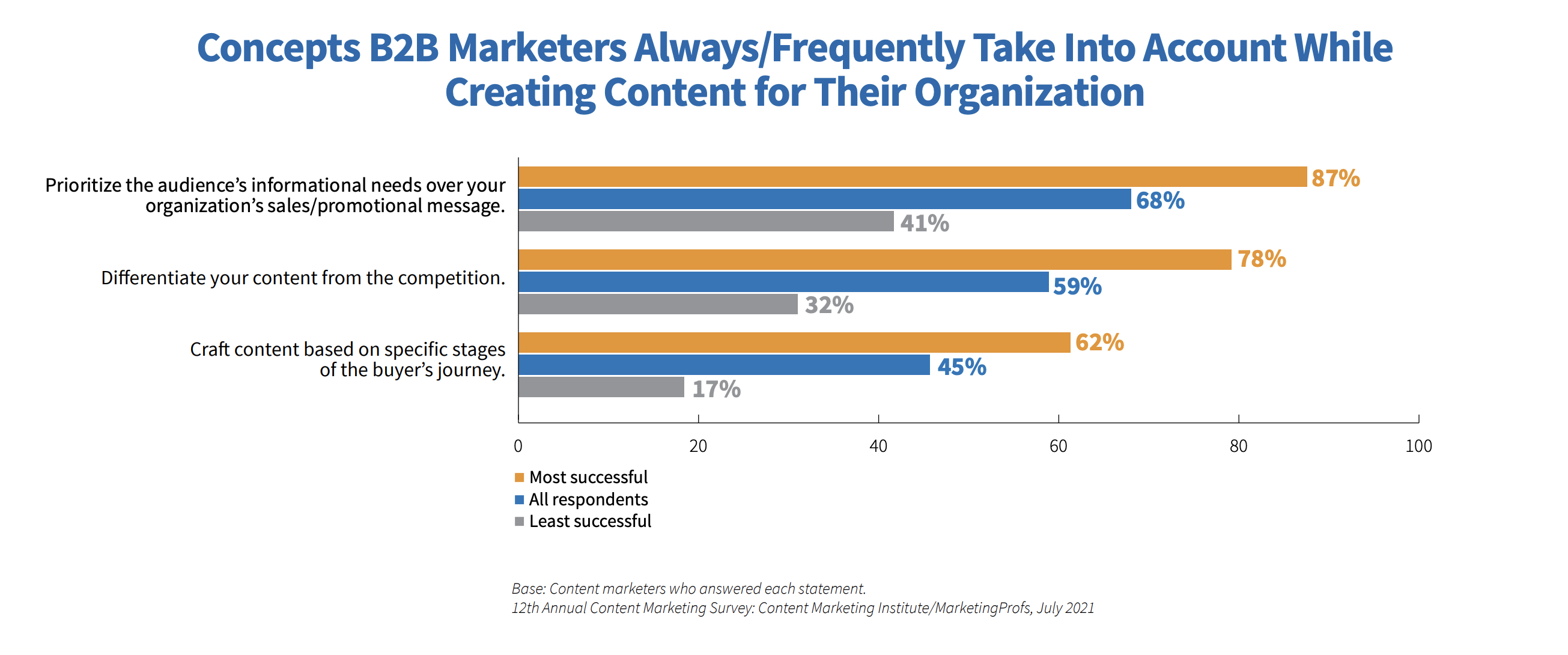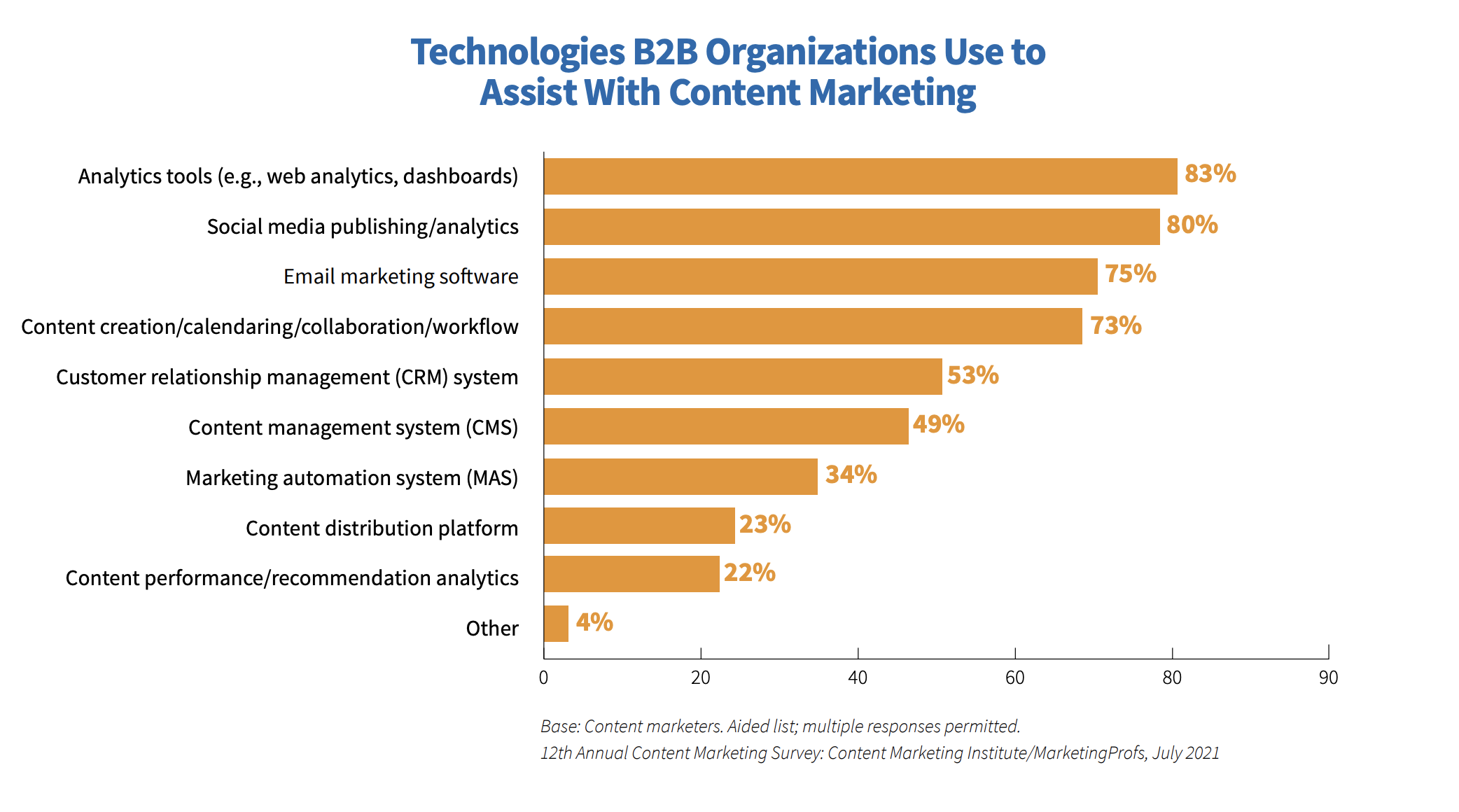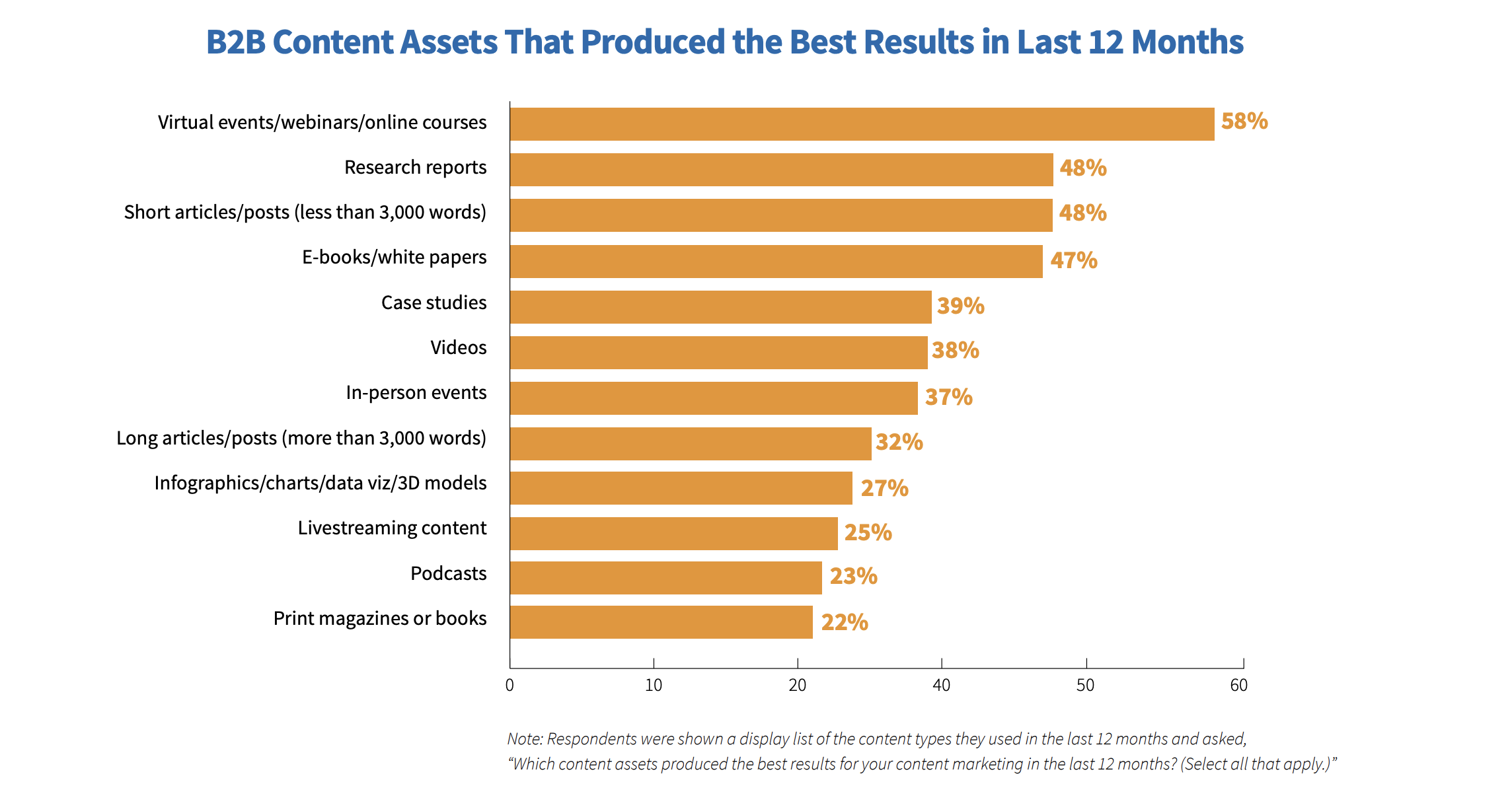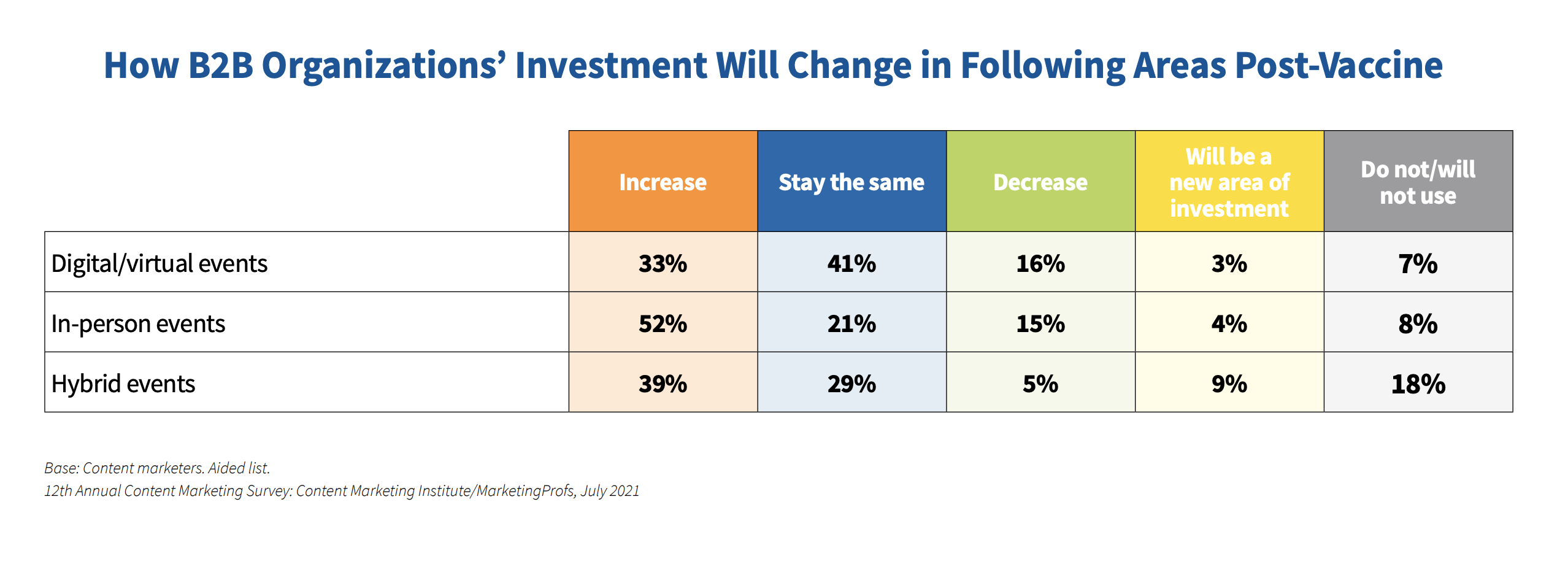4 Key Takeaways From CMI’s 2022 B2B Content Marketing Research
The COVID-19 pandemic didn’t just alter the way we work; it also changed how we connect with one another. With few in-person events or meetings and most people working from home, everyone had to rethink how they communicated with their audience.
Very quickly, high-quality, engaging content became an absolute necessity for most businesses. This awoke a sleeping giant: content marketing.
The Content Marketing Institute’s 2022 Annual B2B Content Marketing Benchmarks, Budgets, and Trends Report gives an interesting insight into the new post-pandemic landscape. Here are the major takeaways.
Don’t bother trying to return to ‘normality’
When businesses were suddenly forced to work a lot harder to reach their customers, many decided to fundamentally change the way they communicate. “The pandemic made us create a strategy,” said one respondent quoted in the report. “Getting attention got way harder, and we had to adapt.”
This meant changing the tone, as well as the context, of their content to fit with the evolving needs and values of customers, focusing more on helpfulness and kindness.

While some businesses have started abandoning this approach, that might be a mistake. Of the businesses that consider their content marketing to be successful, 87 percent are prioritizing the needs of their customers by being helpful over promotional.
Key takeaways
- The tone of your content is more important than ever
- Prioritize your audience’s needs over your sales message
- Focus on helpfulness and kindness
Embrace the technological shift
All industries had to change the way they used technology — and content marketing was no different. Marketers had to get used to new content creation, collaboration, and workflow tools, like a content marketing platform. While this may have required some adaptation, it allowed for increased inter-departmental collaboration and enabled businesses to create more effective content as a whole.

The report showed 83 percent of businesses that considered their marketing efforts to be successful use collaboration and workflow tools to improve how they work with distributed teams. In contrast, only 50 percent of those who considered their content marketing to be “unsuccessful” used the same tools. Collaboration has always been key, but now there is no excuse to ignore the technology capable of maximizing the way teams work together.

B2B businesses aren’t just using technology to collaborate, though. Around 58 percent of respondents said online events produced the best results over the last 12 months — with research reports and articles less than 3,000 words coming in a close second.
Key takeaways
- Look for new ways to reach your audience
- Don’t ignore more traditional formats
- Use tools and technology to improve efficiency and collaboration
LinkedIn reins supreme for B2B marketers
While social media is evolving quickly, it remains one of the most important ways to engage your audience and distribute content.

As always, social media played a large part in distributing content. While B2B marketers use a range of different platforms, however, they don’t always produce the same results. 77 percent of respondents said LinkedIn performed best in the last 12 months with Facebook lagging behind in second place at 37 percent.
This shows that more effort put into social media doesn’t always mean better results. Take time to identify your highest-performing channels then consider whether you’d be better off putting more effort and budget into them, rather than spreading your resources across multiple platforms.
Key takeaways
- Focus your attention on the platforms that get the best results—with some extra attention paid to LinkedIn
- Consider the different ways in which you can distribute interactive content types (such as webinars and virtual events)
- Look for ways to establish your brand and management as thought leaders (such as through presentations and talks at events)
Content marketing budgets are on the rise, buoyed by virtual events
Many businesses had to pivot quickly during the pandemic to reach their audience. In general, an increase in virtual events, customer-first content marketing, and a gentler tone-of-voice paid off. As one respondent said: “Work-from-home forced us to do more webinars instead of live events, which ended up increasing our actual audience 10x. And not a junk audience either, but a relevant audience that we weren’t reaching before.”

The change in attitude towards content marketing has been reflected in budgets, with 66 percent of respondents expecting their future marketing budget to increase from 2021 figures. Investment in in-person events are expected to return, but many marketers are planning to invest in hybrid events as well.
Key takeaways
- Virtual events aren’t going anywhere
- Examine how you can film and record in-person events to create a companion virtual experience
- Content marketing will remain a vital part of the marketing mix
The end of the pandemic is now in sight, and content marketing emerges on the other side as an industry changed for the better.
“We see the merging of content marketing and other marketing activity,” Robert Rose, CMI’s Chief Strategy Advisor, said. “It’s becoming a more blurred function in the business—and there will be more content-marketing-focused teams now assisting the
wider marketing department, and vice versa. So, we’re seeing more of
the integration of people, processes, and technology that are helping
businesses to approach their content in a more holistic way.”
Get better at your job right now.
Read our monthly newsletter to master content marketing. It’s made for marketers, creators, and everyone in between.




